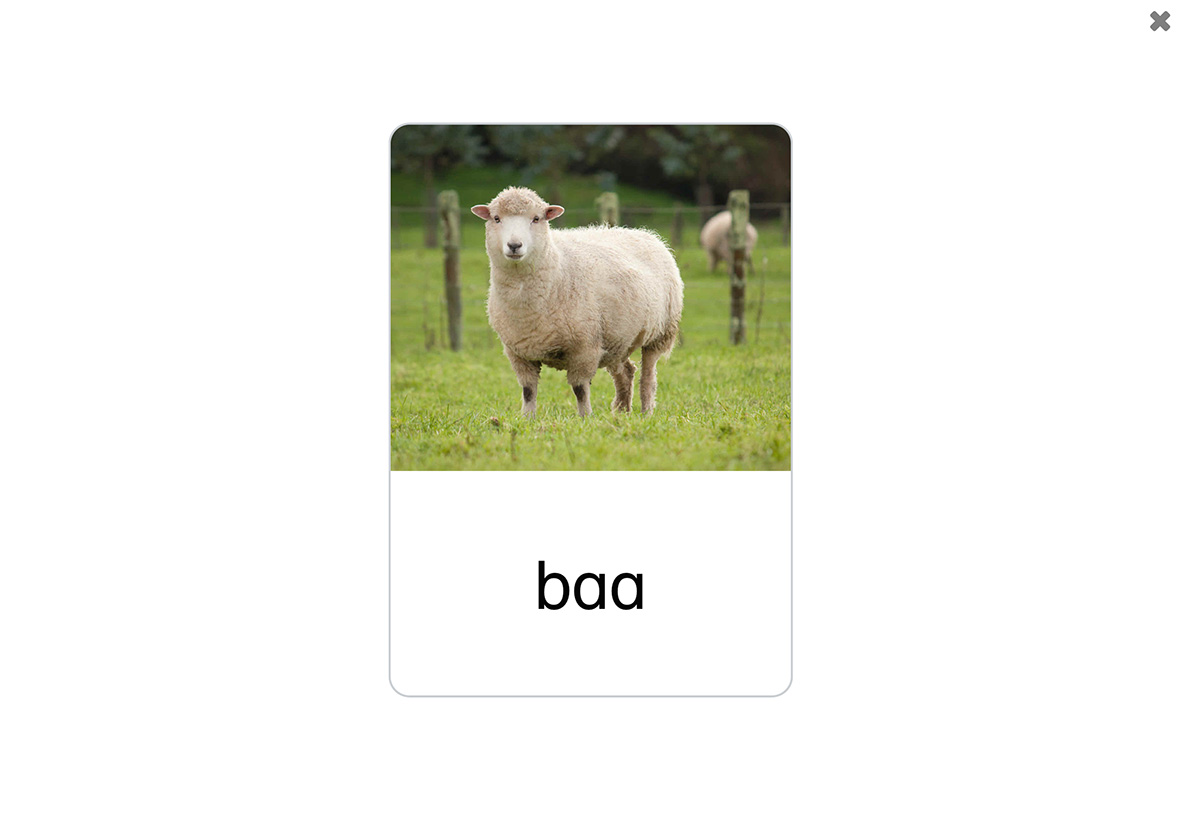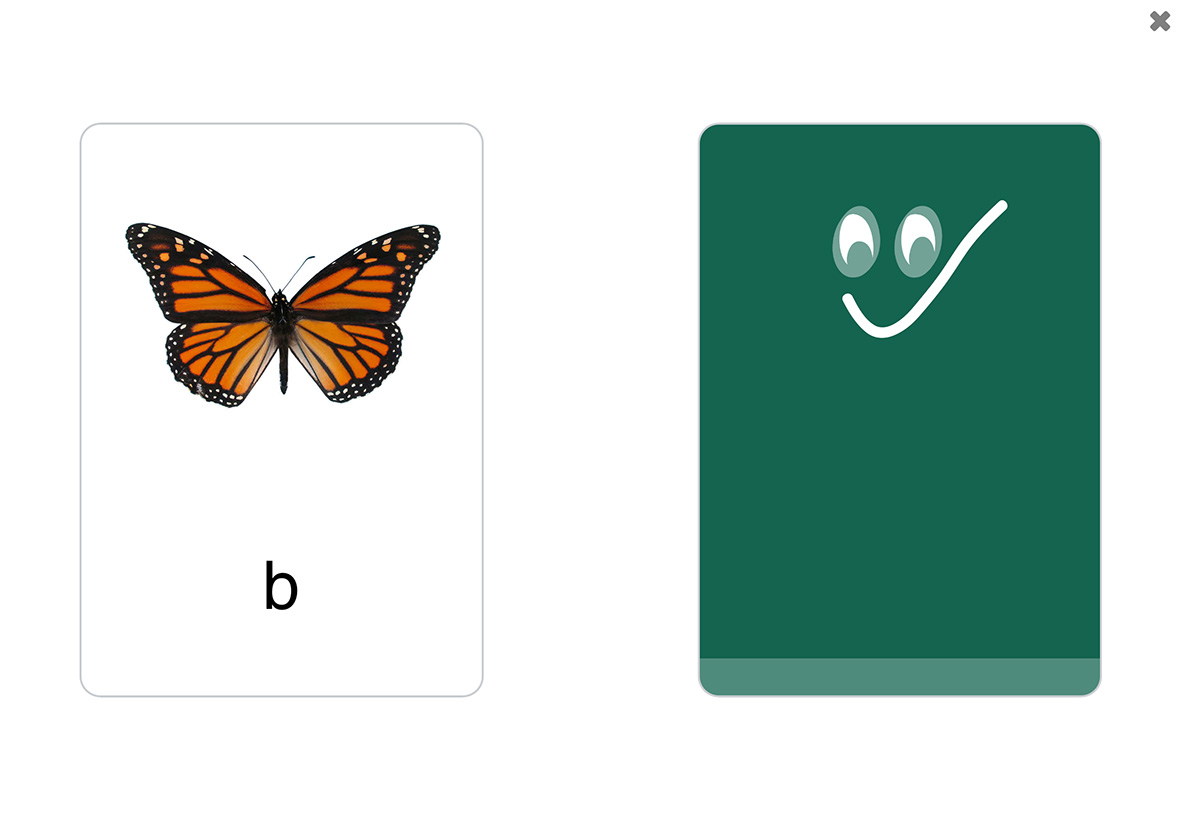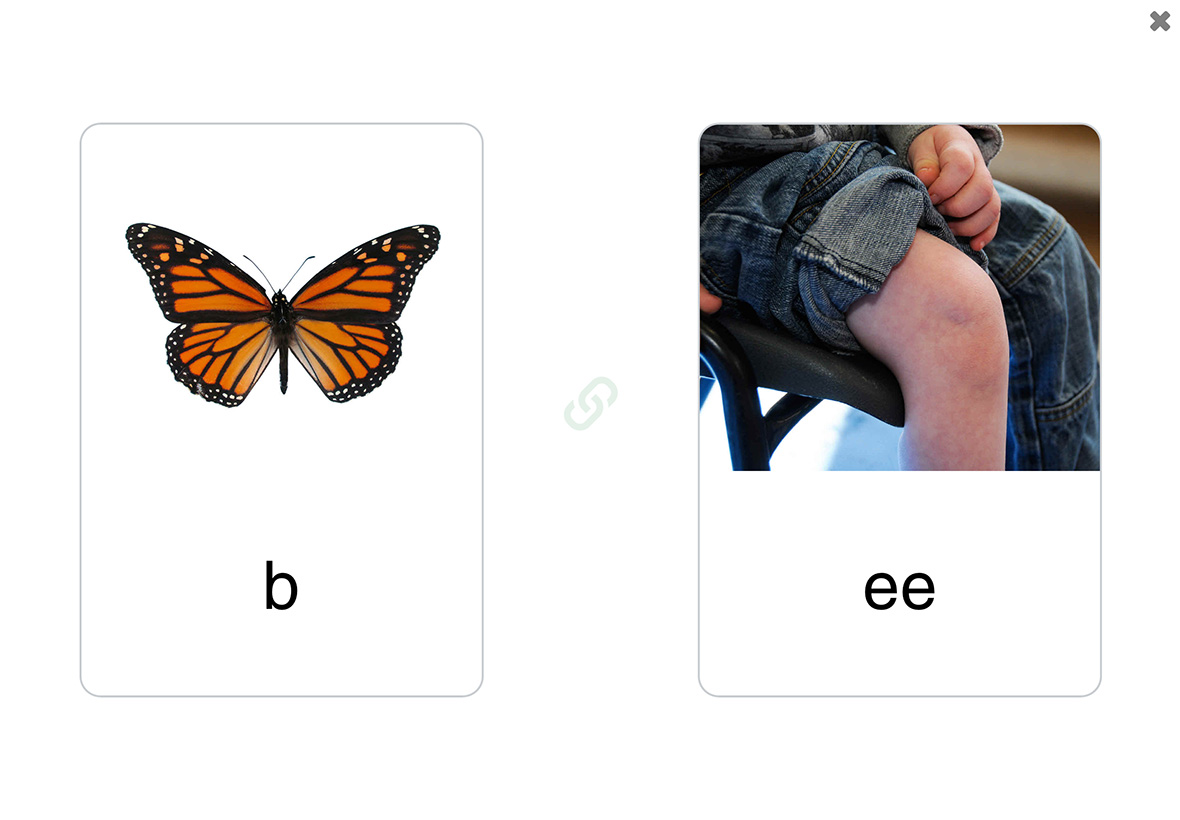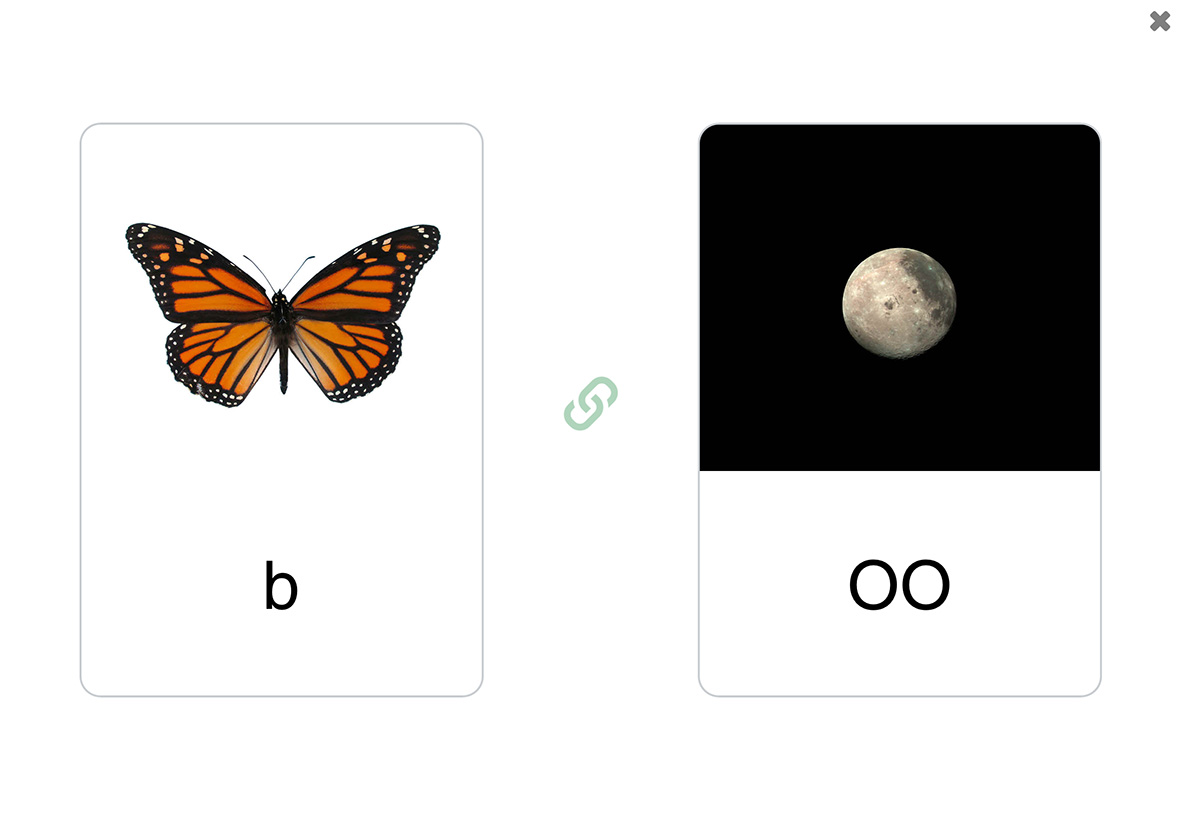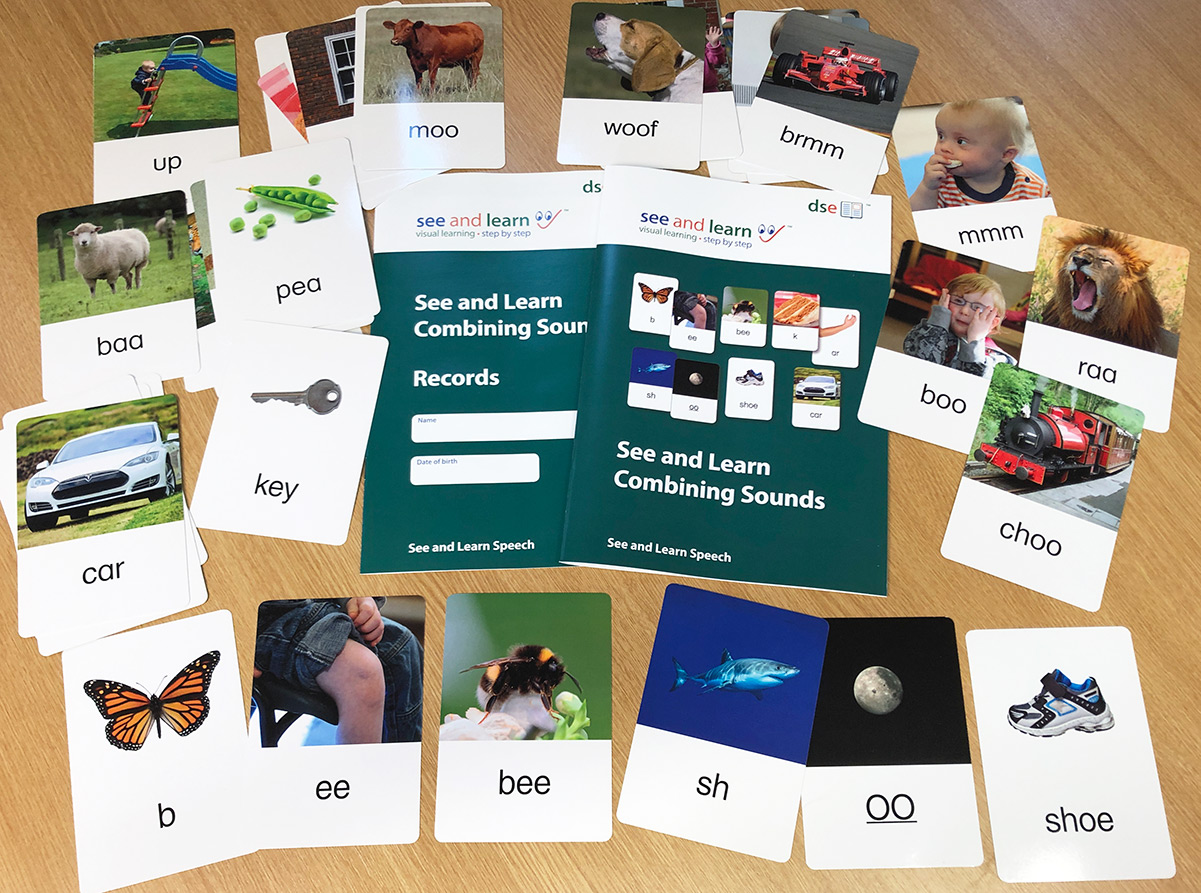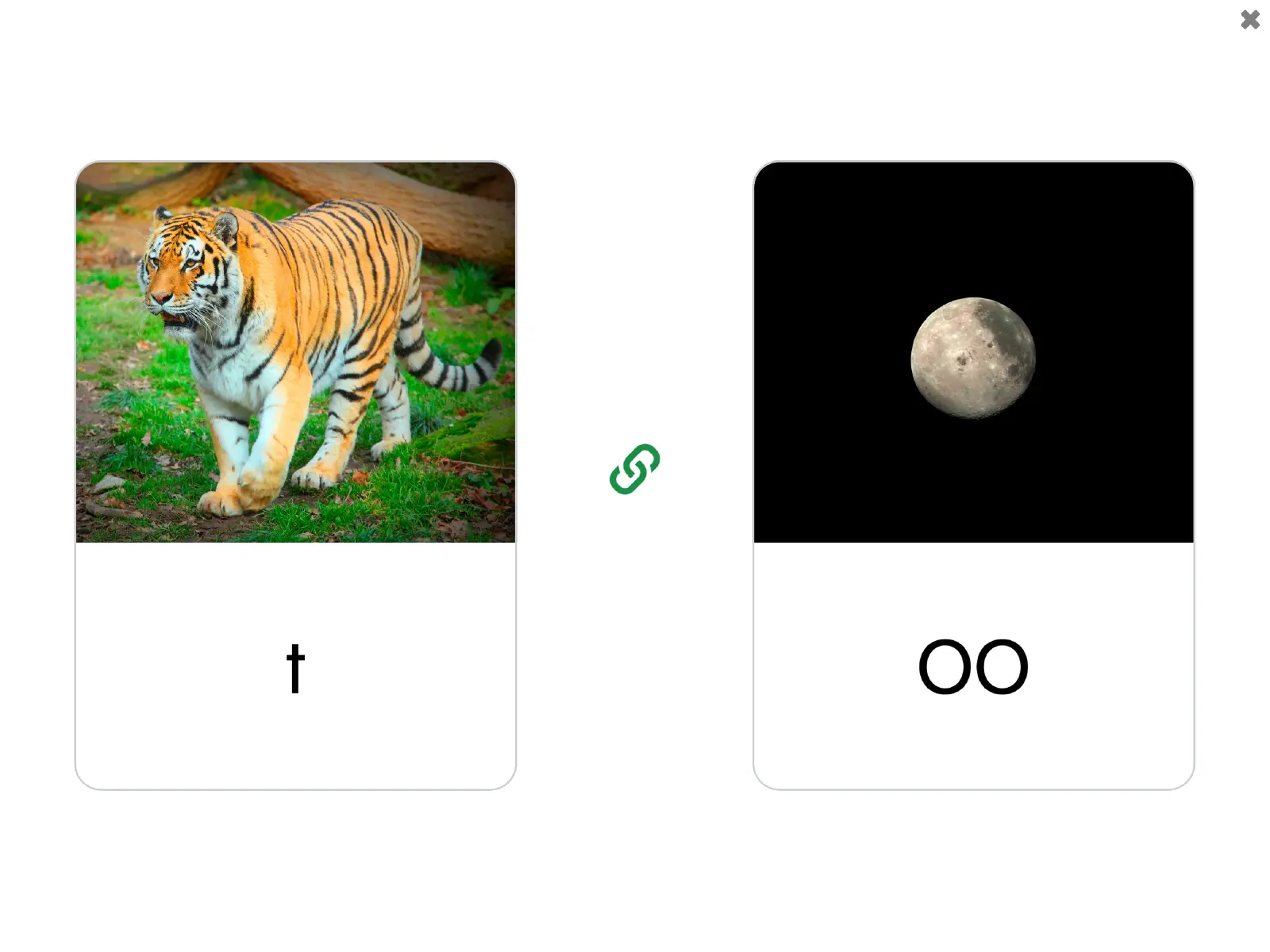Combining Sounds
See and Learn Combining Sounds is the second step in See and Learn Speech. It is designed to help children with Down syndrome practise putting consonant and vowel sounds together.
The activities are intended to supplement everyday opportunities to learn speech with the additional support that most children with Down syndrome, and children with similar additional learning difficulties, need to learn to speak clearly.
Learning goals
- Teach your child to put selected consonants and vowels together to make a combined sound - a step towards saying whole words
- Practise producing combined consonant-vowel sounds
- Continue practising producing isolated speech sounds
- Encourage your child to pay attention and engage in teaching activities for short periods of time
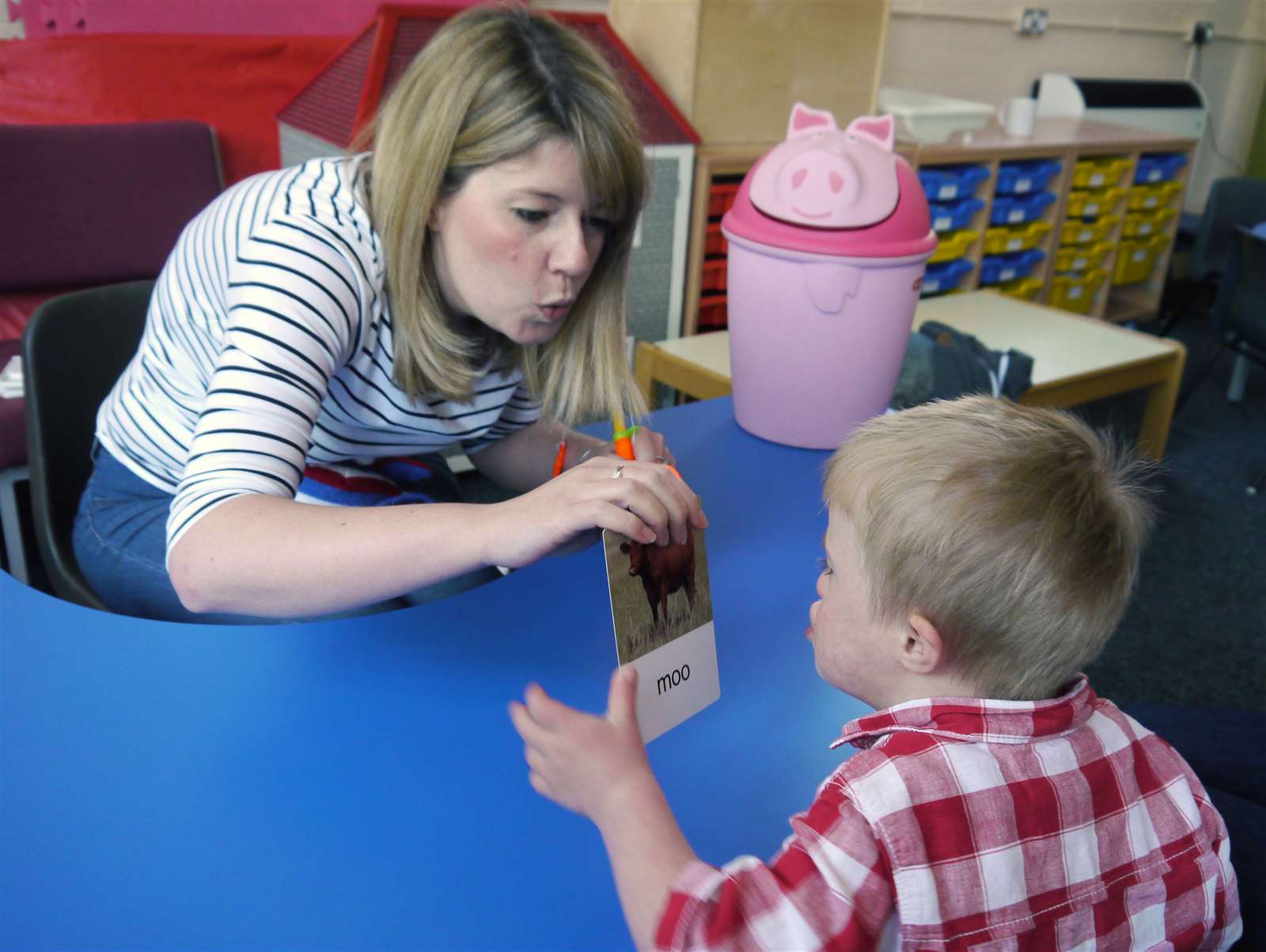
Features
- Designed to build on the children's relative strengths in visual processing and to minimise working memory demands
- Designed to advance in small steps and offer lots of opportunities for practise and consolidation
- 2 teaching activities: Combining Consonants and Vowels and Saying Symbolic Sounds
- Simple design to avoid distraction and focus attention on the learning tasks
- A detailed guide with step-by-step instructions
- Record forms to track your child's progress and plan the teaching activities
- Resources for teaching in any English dialect (optional spoken prompts are included in the app editions with UK and US accents)
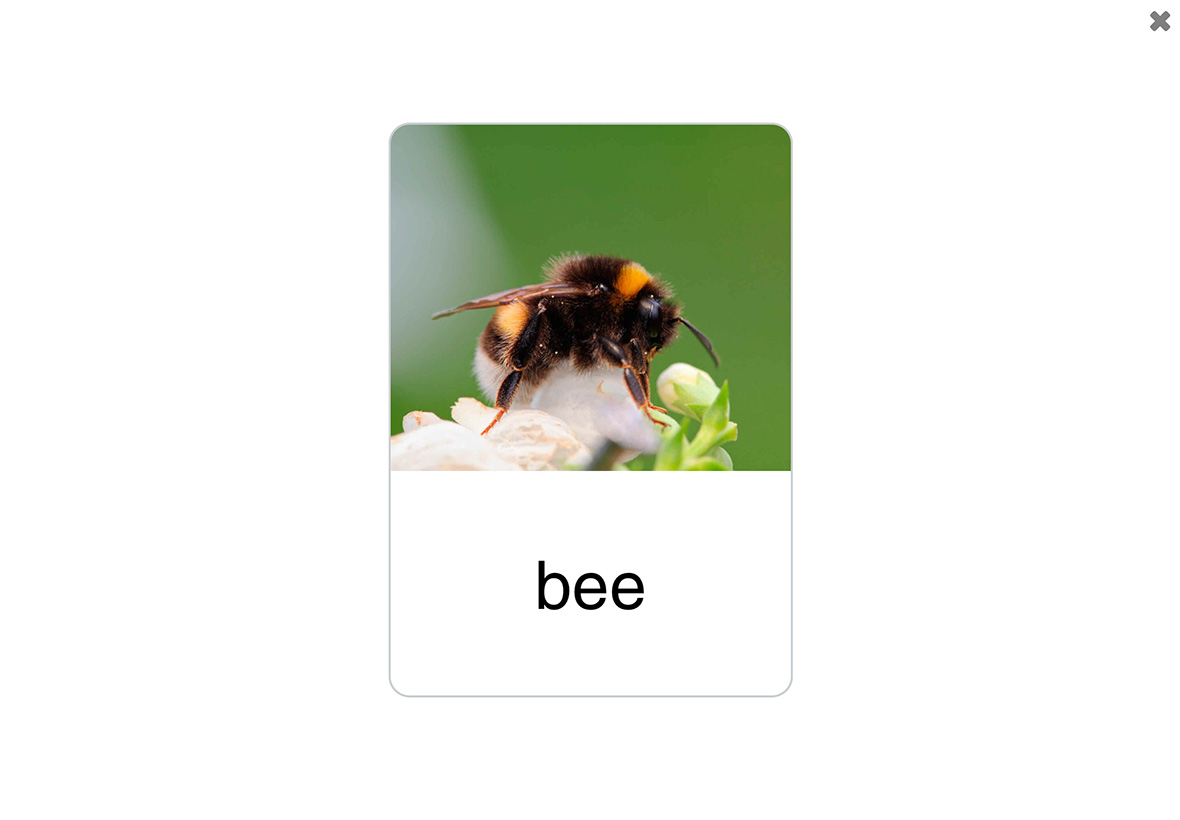
When to start
See and Learn Combining Sounds is designed for use with children with Down syndrome who are beginning to say consonant sounds in imitation and in babble (from 9 to 12 months), and older children who are starting to combine sounds.
Children can start the activities in See and Learn Combining Sounds when they:
- Can say at least some of the consonants b, m, p, h, k, l, r, sh, t, w, z
- Can say the vowels ar as in arm, ee as in knee, oo as in moon
Children will learn to say sounds in different orders. If your child is able to say some of these consonants you can start working on the activities using the consonants they can say with the vowels.
See and Learn Speech Sounds (the first step in See and Learn Speech) provides activities to teach children to hear and say single consonant and vowel sounds. You can continue to use See and Learn Speech Sounds to teach your child the single sounds they are not yet saying while starting to learn to put together the sounds they can say.
See and Learn Combining Sounds may also be useful for older children who are making word attempts but have very unclear speech.
Progress Tracking Apps
New progress-tracking apps are coming soon.
Record and monitor your child's progress, get personalised advice and guidance, and support scientific research.
Next steps
Children who have learned to combine some of the consonants b, d, m, p, y, n, w or h with vowel sounds are ready to start practising saying whole words with See and Learn Saying Words 1.
See and Learn Speech is designed to encourage clearer speech production. Children should be learning the meanings of words and how to use words to communicate. See and Learn Language and Reading teaches the meaning of spoken words and encourages children to practise saying new words. It is designed to be used alongside See and Learn Speech.
Many children with Down syndrome will progress more slowly with speech production than word learning. Slower progress with speech development is not a barrier to learning new words and phrases. Children can communicate their understanding or words via sign or gestures (for example, pointing a pictures or written words) even if they are still learning to say the words clearly.
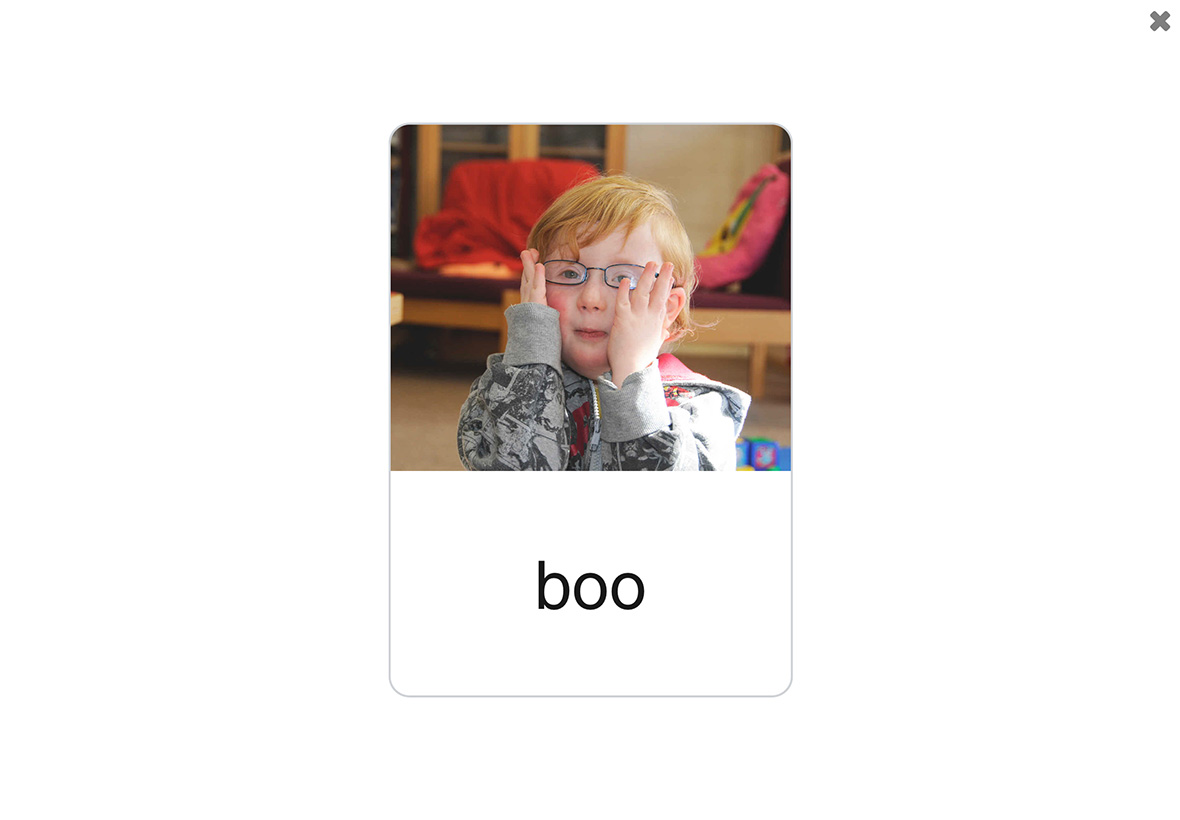
How to buy
See and Learn Combining Sounds is available as a printed kit or as an app for Apple iPads.



